Sensitivities
A. Increased flood frequency and higher peak flows may reduce egg-fry survival for fall spawners and yearling parr winter survival.
B. Increased sedimentation in streams will accompany increased flooding and wildfire.
C. Lower low flows in summer will reduce fish habitat quality.
D. Lower low flows in summer will increase pre-spawn mortality for summer run and stream-type salmon and steelhead.
E. Warmer stream temperatures will reduce thermal heterogeneity in streams and increase thermal stress on many life stages of fish.
F. Warmer stream temperatures may favor nonnative fish species.
G. Warmer stream temperatures may create more favorable conditions for diseases and parasites.
H. Climate change will likely result in shifts in native species distributions and community realignments.
A. Sensitivity: Increased flood frequency and higher peak flows may reduce egg-fry survival for fall spawners and yearling parr winter survival.
Explanation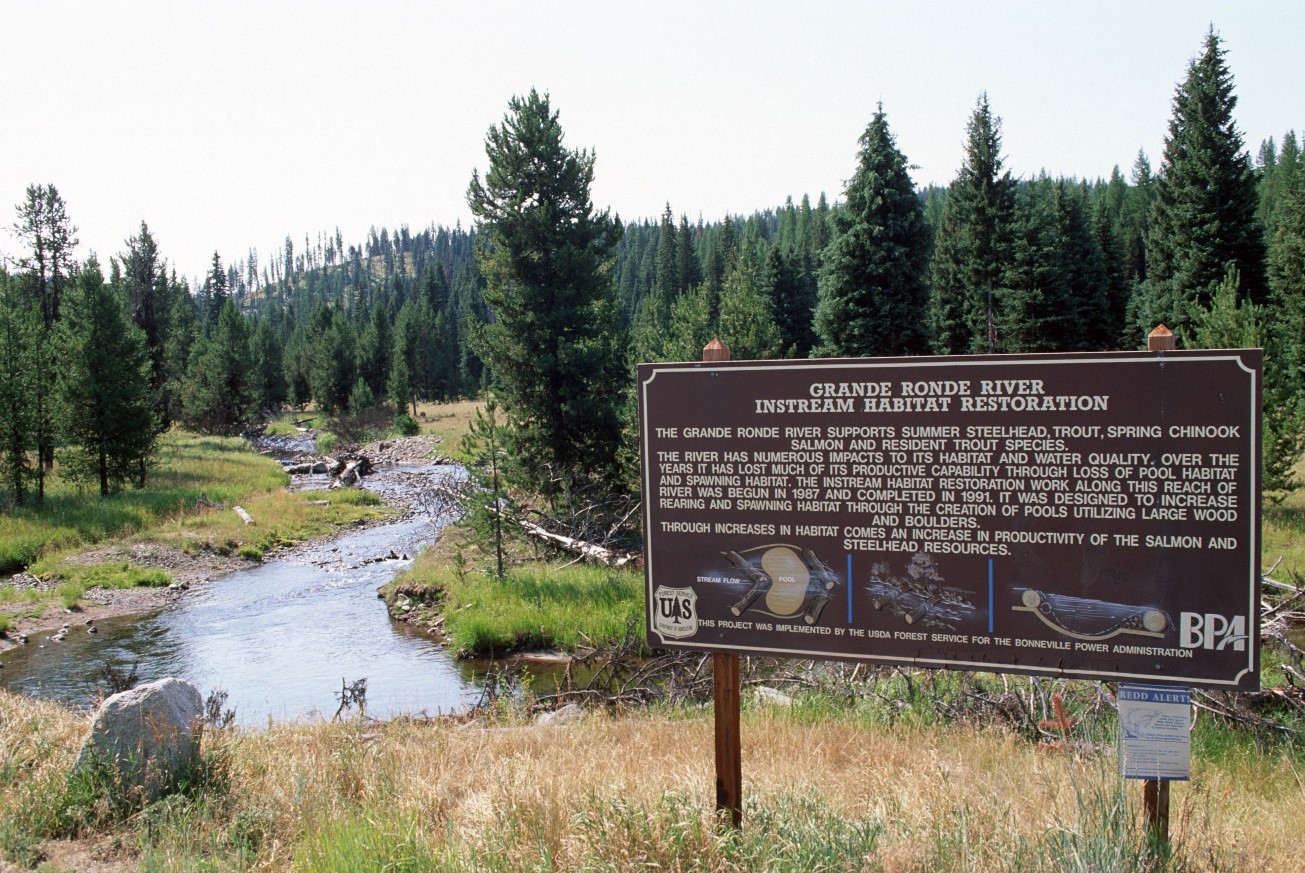
A warmer climate is expected to reduce snowpack and increase rain:snow ratios, thus leading to more flooding, especially in late autumn and winter when eggs and young fish of some species are especially vulnerable to damage by turbulent water and abrasion by sediments (Mantua et al. 2010, Goode et al. 2013).
Practices
Increase spawning habitat resilience by restoring stream and floodplain structure and processes
- Restore stream and floodplain complexity
- Increase protection of alternate spawning habitat
- Consider removing natural barriers to increase spawning habitat
- Increase use of logjams where feasible
- Increase bank and channel stability
Increase habitat resilience by reducing threats from roads and infrastructure in floodplains
- Designate and restore natural floodplain boundaries
- Increase floodplain habitat
- Remove infrastructure from floodplains
- Disconnect roads from streams
- Reduce road density near streams
- Increase culvert capacity
- Reduce flashiness of peak flows
- Increase side-channel habitat and increase large wood for parr (juvenile fish) winter survival
B. Sensitivity: Increased sedimentation in streams will accompany increased flooding and wildfire.
Explanation
Increased flooding will expose streambanks and accelerate subsequent erosion into streams (Goode et al. 2013). Increased wildfire will expose soils to overland flow and channeling in the absence of live vegetation, thus accelerating sediment removal and erosion into streams, especially near roads (Goode et al. 2012).
Practices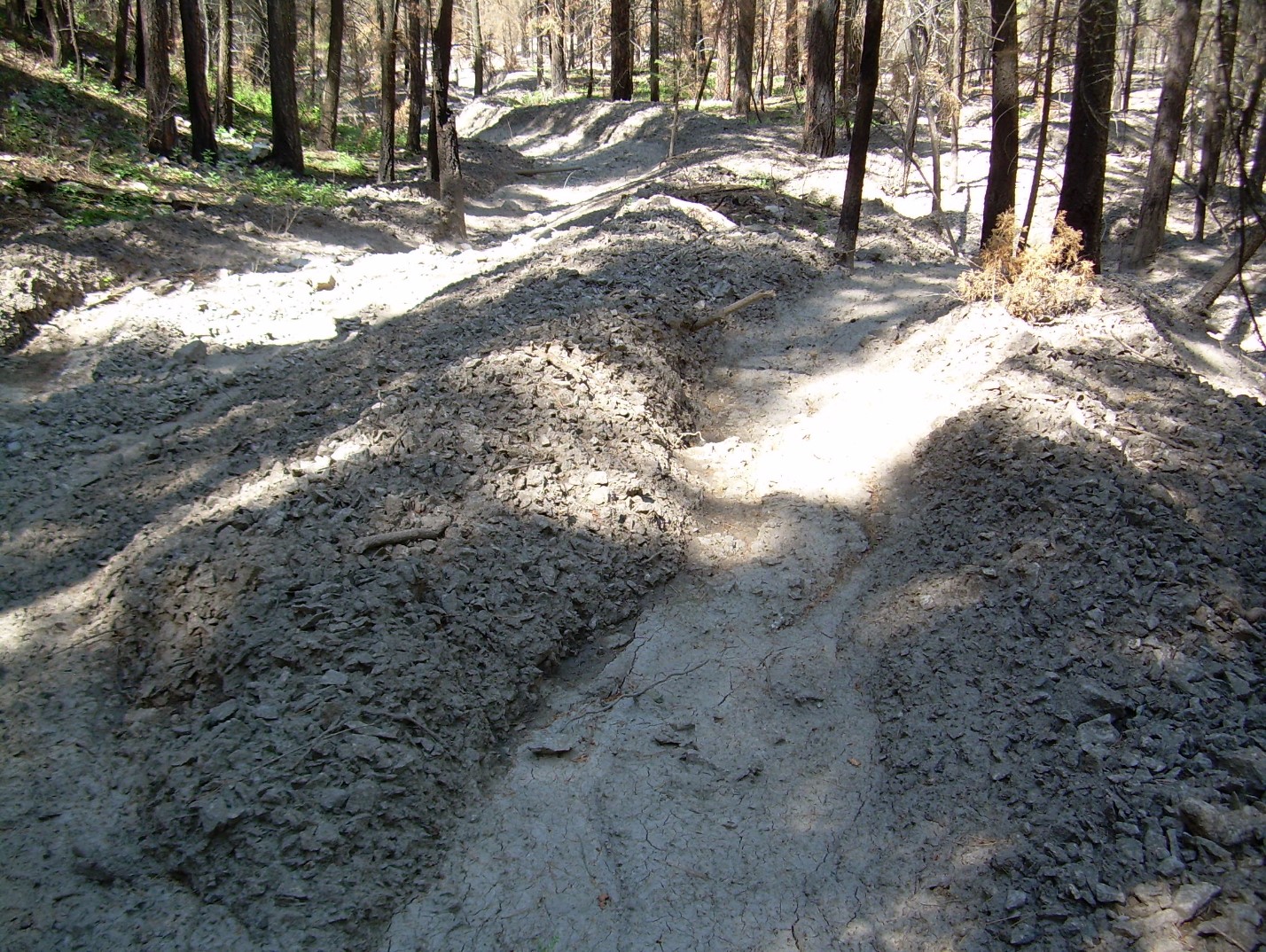
Manage and reduce sediment generated by roads
- Evaluate road system for sediment input
- Reduce sediment input to streams by replacing culverts, and relocating and decommissioning roads
Reduce sedimentation associated with erosion and wildfire
- Include climate change projections in identification of potential areas for streambank and upland erosion
- Inventory disturbed areas for riparian and upland vegetation restoration
- Manage fire and fuels in dry forests with thinning and prescribed fire to reduce fire severity and extent
- Restore and revegetate burned areas to store sediment and maintain channel geomorphology
- Develop a geospatial layer of debris flow potential for pre-fire planning
C. Sensitivity: Lower low flows in summer will reduce fish habitat quality.
Explanation
In a warmer climate with less snowpack, streamflows will be even lower in summer, at a time when sufficient flows of cool water are needed for various life stages of fish (Mantua et al. 2010, Isaak et al. 2017).
Practices
Increase aquatic habitat resilience to low summer flows
- Increase off-channel habitat and protect refugia in side channels and channels fed by wetlands
- Protect wetland-fed streams that maintain higher summer flows
- Design channels at stream crossings to provide a deep thalweg for fish passage during low-flow periods
- Increase deep-water habitat and channel morphology
- Reduce width:depth ratios to reduce solar radiation in stream
Manage upland vegetation to retain water and snow in order to slow spring snowmelt and runoff
- Manage forest cover to retain snow and decrease snowmelt
- Restore mid-and high-elevation wetlands that have been altered by land use
Decrease fragmentation of stream network so fish can access similar habitats
- Identify stream crossings that impede fish movements and prioritize culvert replacement
- Use stream simulation design (e.g., bottomless arches, bridges), adjusting designs to provide low-flow thalweg
- Rebuild stream bottoms by increasing floodplain connectivity, riparian vegetation, and water tables; decrease road connectivity
- Restore beaver habitat and beaver colonies
- Maintain minimum streamflows (buy and lease water rights, install modern flow structures, monitor water use)
Manage riparian vegetation to optimize shade to streams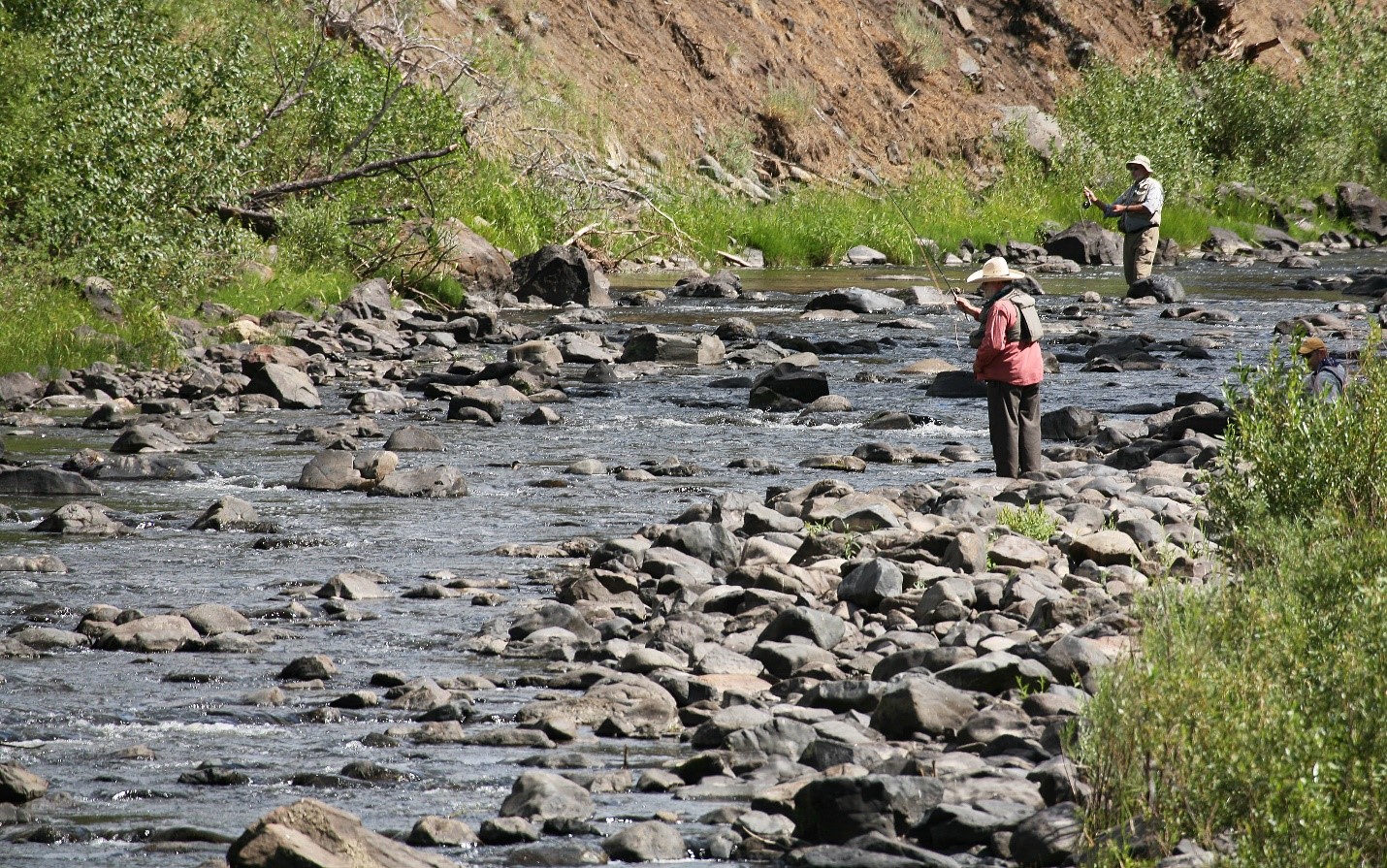
- Plant trees in riparian areas
- Maintain or enhance shade to streams
- Increase sinuosity in channels
- Eliminate human disturbances affecting width:depth ratio
Reduce intensity of use in areas of concentrated fish populations, particularly during drought
- Stop fishing and curtail uses (in important cold-water habitat or other important habitat) during drought
- Curtail season of use or shut down recreation season (rafting, camping) during drought
- Shift recreation to more stable, resilient areas
- Fence off areas to keep livestock out of sensitive areas
- Bring in alternative sources of water for livestock to remove them from or reduce use of critical areas
- Educate the public so that they can change their behavior and activities
- Use signs to help inform the public about sensitive areas
Protect existing hyporheic flows
- Avoid activities that disrupt flows
- Identify locations of hyporheic flows
Increase residence time; store water on landscape
- Restore fluvial processes
- Promote beaver populations
- Protect springs
- Improve efficiencies in regulated water use; promote water conservation
- Identify where reservoir management can improve species conservation
D. Sensitivity: Lower low flows in summer will increase pre-spawn mortality for summer run and stream-type salmon and steelhead (Mantua et al. 2010, Isaak et al. 2017).
Explanation
In a warmer climate with less snowpack, streamflows will be even lower in summer, at a time when sufficient flows of cool water are needed for various life stages of fish.
Practices
Increase in-stream flows with dry-season water conservation to reduce withdrawals
- Increase efficiency of irrigation techniques
- Reduce summer withdrawals on federal lands
- Consider alternative water supplies for federal lands to retain in-stream flows
- Coordinate with downstream partners on water conservation education
- Restore beaver habitat and populations
- Investigate and quantify connectivity between groundwater and streamflows
E. Sensitivity: Warmer stream temperatures will reduce thermal heterogeneity in streams and increase thermal stress on many life stages of fish (Mantua et al. 2010, Goode et al. 2013, Isaak et al. 2017).
Explanation
In a warmer climate with less snowpack, streamflows will be lower in summer in addition to being affected by higher air temperatures, at a time when sufficient flows of cool water are needed for fish.
Practices
Increase habitat resilience for cold-water fish by restoring structure and function of streams
- Increase habitat and refugia in side channels
- Protect wetland-fed streams that maintain higher summer flows
- Restore structure and heterogeneity of stream channels
- Reconnect floodplains to improve hyporheic and base flow conditions
- Remove dikes and levees
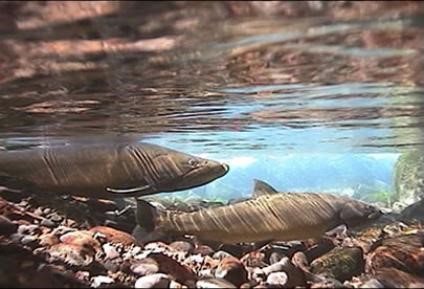
- Restore and protect riparian vegetation.
- Manage livestock grazing to restore ecological function of riparian vegetation and maintain streambank conditions
- Reduce high road densities that are intercepting subsurface stream flows
Increase understanding of thermal tolerance of fish species
- Conduct field experiments of fish-temperature relationships for multiple species and regions
- Monitor changes in stream temperature and fish distributions
- Re-evaluate and update water temperature standards (both values and indices)
- Manage fishing to reduce stress to fish during critical times
Increase understanding of thermal heterogeneity in streams and cold-water refugia
- Identify and inventory cold water refugia, springs, and groundwater input to springs
- Identify seasonal refugia (winter and summer)
F. Sensitivity: Warmer stream temperatures may favor nonnative fish species.
Explanation
Increased stream temperature in summer is expected to create thermal stress for cold-water fish species, making them less competitive with nonnative species that are more tolerant of warm water (Mantua et al. 2011).
Practices
Increase resilience of native fish species by reducing barriers to native species and removing non-native species
- Survey and map nonnative species
- Combine mapping of nonnative fish species with information on migration barriers
- Consider information from surveys of warmer basins farther south as indicators of vulnerability
- Assess migration barriers and potential habitat for native species
- Remove barriers to fish passage where this will not increase threats from nonnative species
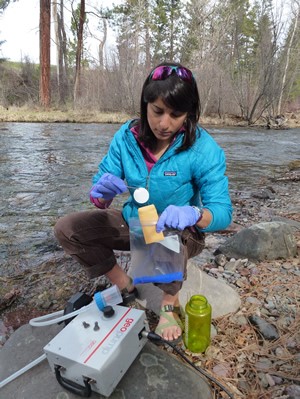
- Tailor restoration actions to benefit native species
- Maintain or construct barriers to prevent spread of nonnative species
- Manage livestock grazing to restore ecological function of riparian vegetation and maintain streambank conditions.
- Remove or control nonnative fish species
- Reduce habitat fragmentation of native trout habitat through barrier removal (e.g., culverts and water diversions)
- Restore native trout to high elevation, cold-water refugia
Monitor for invasive species and control or eliminate populations
- Use environmental DNA (eDNA) monitoring for early detection of river and stream invasions
- Reduce or suppress brook trout populations
- Construct barriers that prevent access/invasion to conserve native populations in headwaters
- Implement monitoring and boat inspection programs to detect invasive mussel and aquatic plants species in lakes before populations are established
- Use early detection/rapid response
G. Sensitivity: Warmer stream temperatures may create more favorable conditions for diseases and parasites (Mantua et al. 2011).
Explanation
Increased stream temperature in summer facilitates development and spread of some types of diseases and parasites, which adds to the thermal stress experienced by cold-water fish species, making them even more vulnerable to a warmer climate.
Practices
Increase population resilience by increasing fish health
- Increase public education to eliminate disease vectors
- Use direct treatment or removal of infected fish
- Survey fish health conditions
- Collaborate and standardize health survey methods among agencies
- Consider changes in hatchery practices to decrease infection rates
H. Sensitivity: Climate change will likely result in shifts in native species distributions and community realignments.
Explanation
In most cases, decreased cold-water habitat, progressively confined to higher elevations and other locations with less exposure to high temperature, will restrict the range of fish species that require cool water, rearranging the distribution and abundance of both native and nonnative species (Isaak et al. 2017).
Practices
Conduct biodiversity surveys to describe current baseline conditions and manage distribution shifts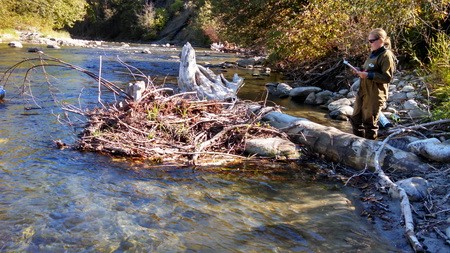
- Formalize, expand and standardize biological monitoring programs (e.g., management indicator species)
- Use modern, low-cost technologies (e.g., environmental DNA [eDNA] and digital photo points)
- Consider managed relocation
- Use digital technology in data collection and for database uploads
- Streamline field crew data collection protocols
- Fully utilize existing corporate databases and legacy datasets
- Develop and improve understanding, adaptive actions, and models related to non-game aquatic species (e.g., mussels, dace, sculpin, spring snails, and amphibians)
- Continue to refine and improve understanding, adaptive actions, and models related to cold-water salmonids
Introduction Hydrology, Water Uses, and Infrastructure Forest Vegetation Non-Forest Vegetation
Riparian Areas, Wetlands, and Groundwater-Dependent Ecosystems Fish Habitat and Fisheries Wildlife Recreation References
Climate Risk Management Practices prepared by: J.J. Ho; J.E. Halofsky; D.L. Peterson

